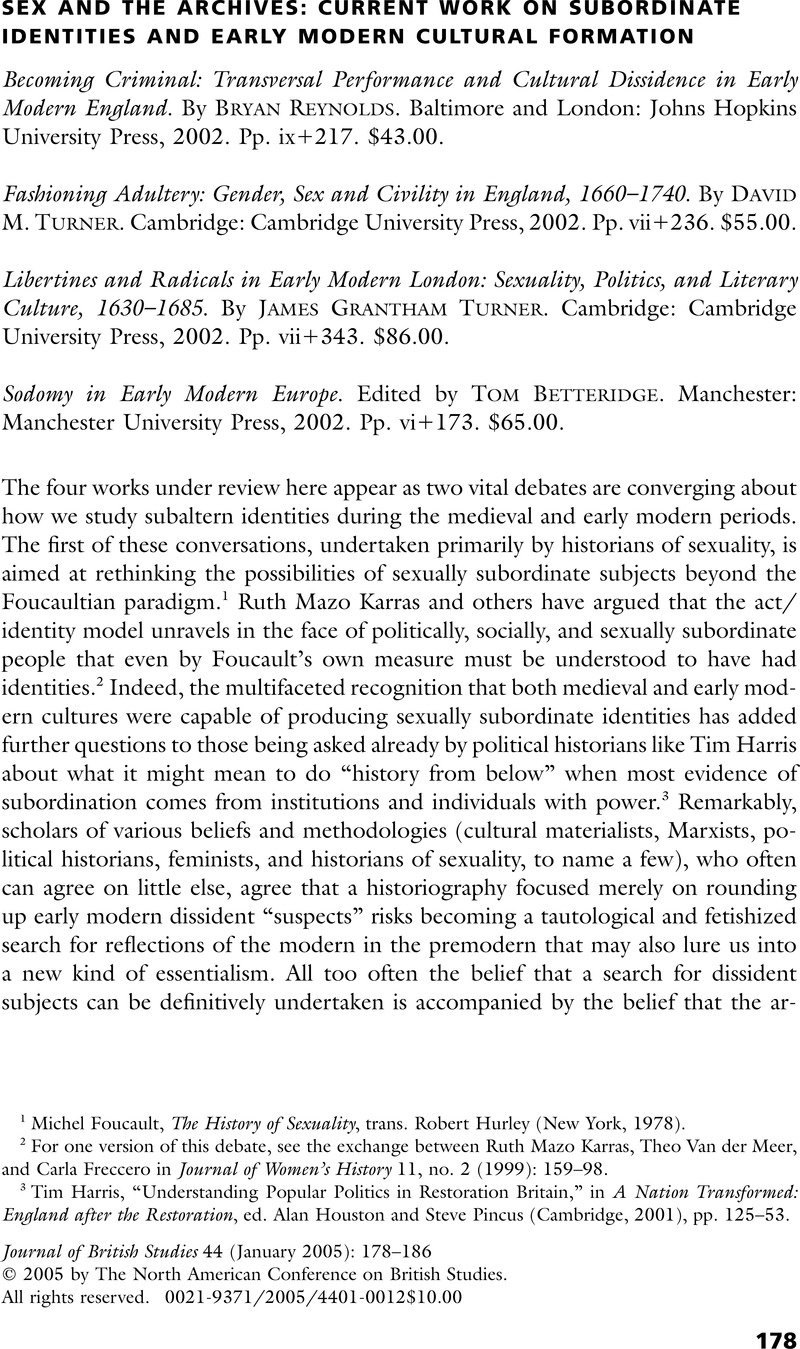Published online by Cambridge University Press: 21 December 2012

1 Foucault, Michel, The History of Sexuality, trans. Hurley, Robert (New York, 1978)Google Scholar.
2 For one version of this debate, see the exchange between Karras, Ruth Mazo, der Meer, Theo Van, and Freccero, Carla in Journal of Women's History 11, no. 2 (1999): 159–98CrossRefGoogle Scholar.
3 Harris, Tim, “Understanding Popular Politics in Restoration Britain,” in A Nation Transformed: England after the Restoration, ed. Houston, Alan and Pincus, Steve (Cambridge, 2001), pp. 125–53Google Scholar.
4 David M. Halperin, e.g., has argued that “we need to find ways of asking how different historical cultures fashioned different sorts of links between sexual acts, on the one hand, and sexual tastes, styles, dispositions, characters, gender presentations, and forms of subjectivity on the other hand.” “Forgetting Foucault: Acts, Identities, and the History of Sexuality,” Representations 63 (Summer 1998): 93–120, 109CrossRefGoogle Scholar.
5 Bray, Alan, “Epilogue,” in Sodomy in Early Modern Europe, ed. Betteridge, Tom (Manchester, 2002), pp. 164–68Google Scholar.
6 Dolan, Frances E., “Ashes and the Archive: The London Fire of 1666, Partisanship, and Proof,” Journal of Medieval and Early Modern Studies 31, no. 2 (2001): 379–408, 381CrossRefGoogle Scholar. See also Echard, Sian, “House Arrest: Modern Archives, Medieval Manuscripts,” Journal of Medieval and Early Modern Studies 30, no. 2 (2000): 185–210CrossRefGoogle Scholar; Brown, Catherine, “In the Middle,” Journal of Medieval and Early Modern Studies 30, no. 3 (2000): 547–74CrossRefGoogle Scholar.
7 Archer, Ian, Pursuit of Stability: Social Relations in Elizabethan London (Cambridge: Cambridge University Press, 1991)CrossRefGoogle Scholar; Gowing, Laura, Domestic Dangers: Women, Words and Sex in Early Modern London (Oxford: Clarendon, 1996)Google Scholar.
8 Shoemaker, Robert, Prosecution and Punishment: Petty Crime and the Law in London and Rural Middlesex, 1660–1725 (Cambridge: Cambridge University Press, 1991), p. 30Google Scholar.